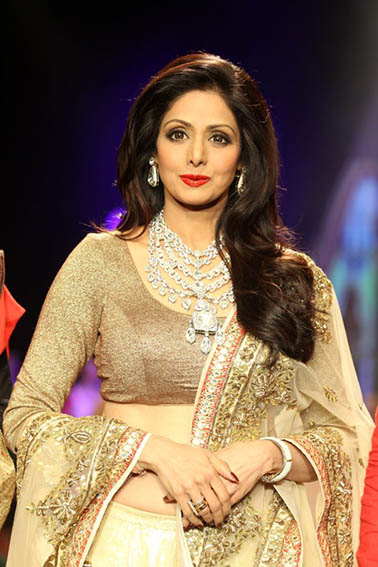By Sudha G Tilak Delhi
(BBC) In the heat of the cruel south Indian summer, Sridevi cut a cool figure.
It was the early 1990s and she was in a white, flowing dress in the famous Prasad Studios in Chennai, the city that spawned the career of India’s iconic actress.
Tall and statuesque, she was regal rather than imperious, her hair styled to resemble a cloud – as was the fashion at the time.
She was sitting on set between takes of a Bollywood song-and-dance sequence, ready for a young reporter’s interview, her expression giving away nothing.
Like most south Indian actors she was known by her first name. Her rise to stardom was an extraordinary chapter in the country’s film industry.
With a filmography of close to 300 movies in more than five Indian languages, she held her own as a leading lady, a box office magnet from the 1970s to late 1990s.
Sridevi’s life on the screen began with a successful early stint performing in all the four language films in south India and graduated to an extraordinary career in Bollywood, where she knew neither the language nor the culture of the Hindi film industry.
When she took a break from films, after her marriage to producer Boney Kapoor in 1996, Sridevi was rumoured to be the highest paid in her field and her star power and charisma persisted for years to come.
She embodied feminine mystique and that classic screen-goddess combination of beauty glazed with mystery and intrigue. She lit up the screen with her vivacity and charm, while off it she remained fiercely private.
Film directors repeatedly spoke in awe of her acting prowess, which followed no method but sheer intuition and instinct as she sparkled before the cameras and retreated into a shell when the lights were off.
A fluid, performing talent
Like the film legend Greta Garbo, Sridevi was the art deco icon for India. Her glittering costumes and dazzling presence on screen, coupled with her sculpted dance performances in Hindi movies, found die-hard fans among young girls and women.
Her burlesque comic acts and vaudeville capers in films such as Mr India and Chaalbaaz delighted both adults and children.
Her vulnerable sex appeal brought her female and male adulation and her intuitive acting expertise made her a box-office sensation in Bollywood.
Sridevi’s screen career began at the age of four in a 1969 Tamil-language film. The eldest daughter of a small-time Tamil lawyer and a Telugu mother, she had an active career as a child actor. At 13 she was cast in the role of a complicated woman avenging her lover’s death and as the young wife of an older man in the Tamil film Moondru Mudichu (Marriage).
Sridevi’s fan base is fiercely regional, too. Her south Indian fans claim that her best acting phase was in the southern language films, especially Tamil and Telugu, where she played non-glamorous and complicated roles.
However, Sridevi’s north Indian fans say it was her Bollywood career that really allowed her charisma and glamour to shine.
In 2012, her comeback Bollywood film English Vinglish was a huge hit, once again cashing in on her unique combination of charisma and fluid acting talent.
Heartbreak and loss
Sridevi’s screen profile was glamorous and she notched up several awards including the Padma Shri, India’s fourth highest civilian honour.
But her private life was one of heartbreak, loss and estrangement.
The Bollywood gossip mill relentlessly spoke of her lack of conversational abilities, her romantic liaisons and heartbreaks as well as her bouts of cosmetic surgery.
Her secret wedding in 1996 led to a 16-year hiatus and she turned to her family life with the birth of her two daughters.
In the years before her death she had taken up a variety of roles and her sudden death at a family wedding in Dubai has come as a shock to India.
In the hours before her death, Sridevi’s Instagram posts were alive with her pictures. Bejewelled and in shimmering couture, her glittering smile lit up the screen as it always had.





